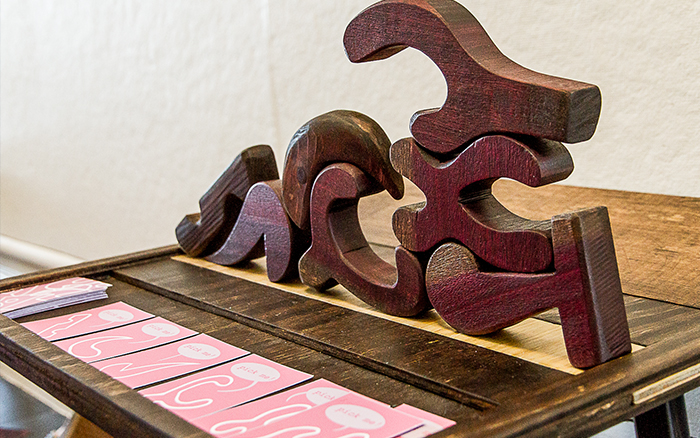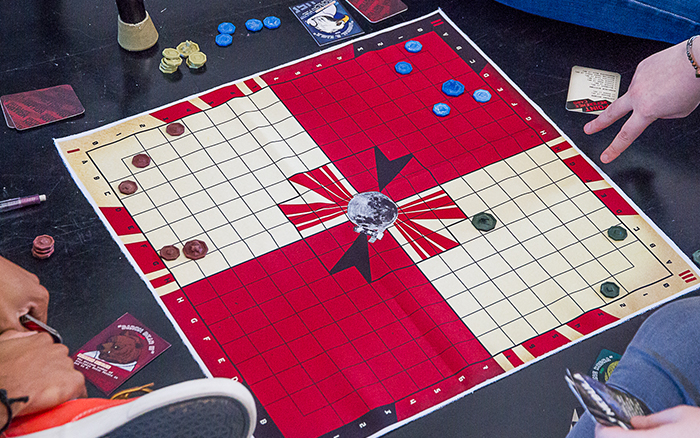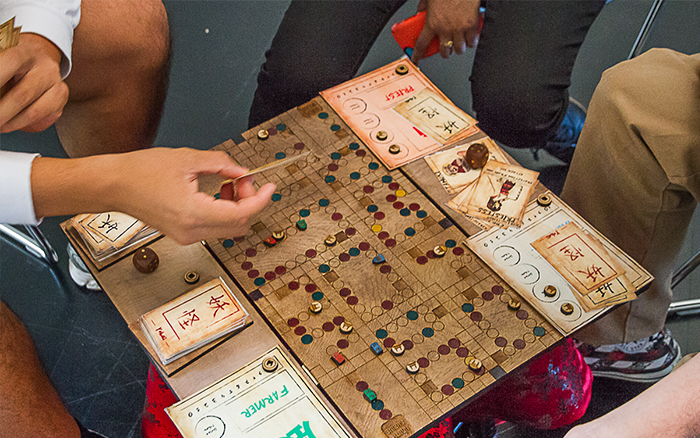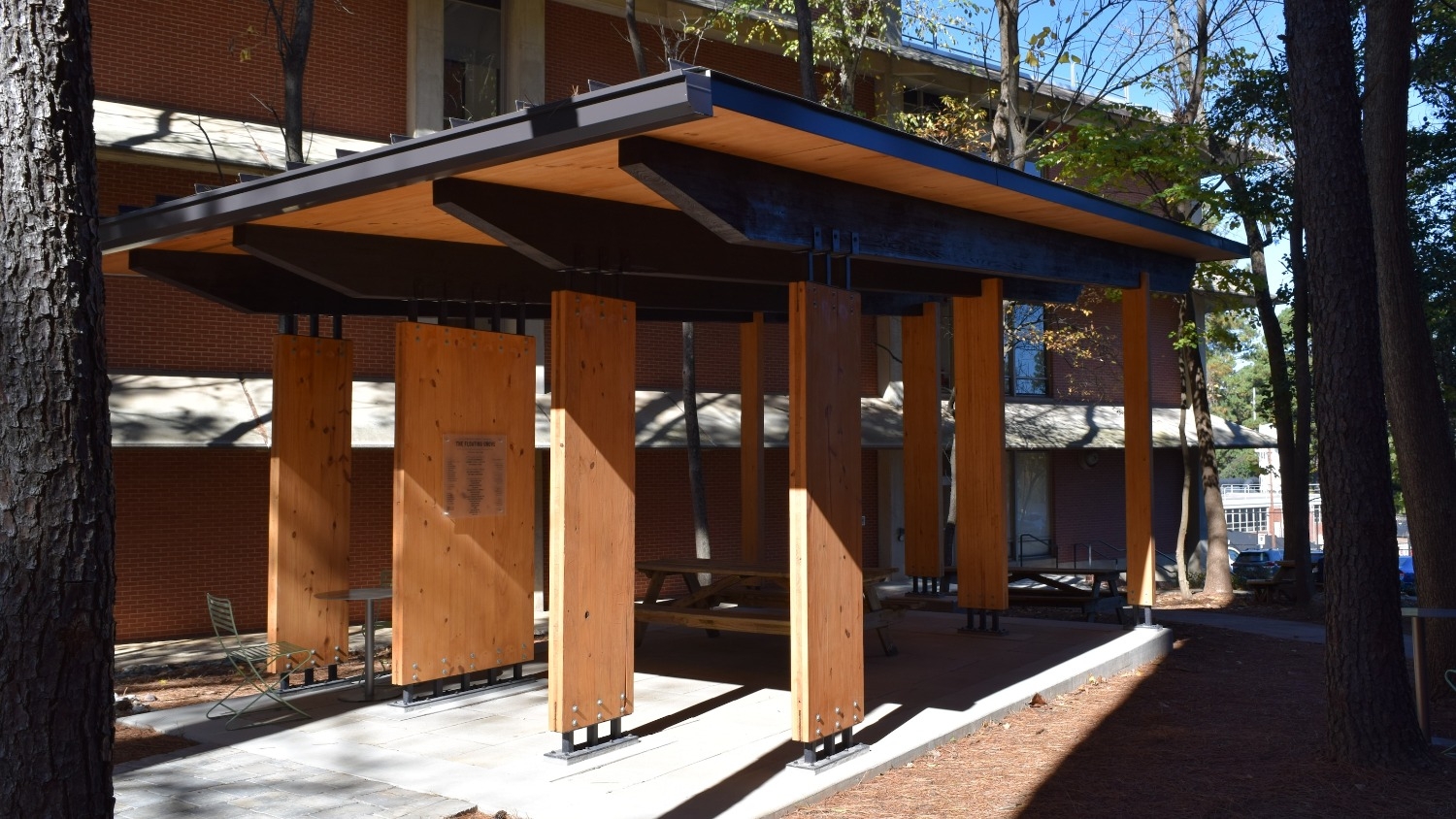It’s All Fun and Games

As a child, I enjoyed games – board games, card games, games of strategy, and games of skill. It wasn’t often that as a family we would have family game night, but those few rare occasions are pivotal in my memory. Some of my favorite games were The Game of Life, Monopoly, Yatzi, Othello, and Scrabble. Many of these games were not only fun but provided educational value (unbeknownst to me as a child).
As I grew up and had a family of my own, I introduced games to my children. Family game nights were often and provided the fondest memories. My daughter especially loves games – we referred to her as “Game girl” as a youngster.
So when Brooks Hall at the College of Design was showcasing the gaming projects of students last fall, it was no wonder that I was completely fascinated. I suspect that many others also may have felt similar feelings of awe. The unique works developed by Art + Design students came out of the fall ADN 460 Multimedia Studio: Intro to Game Creation. This was the first for this class to be held and was led by Assistant Professor of Art + Design Emil Polyak.
Here is an excerpt from an article that will appear in a gaming publication by Polyak:
The Intro to Game Creation was a hands-on course with the goal to encourage an innovative, game-related design process, critical thinking, research and analysis in a collaborative environment without forcing any kind of specific technical know-how or step-by-step blueprint. The brief of the project included the development, design, and fabrication of a board game as well as the documentation of the design process that the groups decided to follow. Beyond these requirements, a complete freedom was given in terms of what type of game is developed or what materials and tools are employed. The students worked in seven groups and approached the task in very different ways. The variety of projects developed for this assignment simultaneously by the groups turned the class into a design powerhouse. While one group was working on the visual appeal and a consistent color palette, the other group was analyzing their statistical test data to improve the play. Collaboration is an extremely common practice in the field of design and the process of developing a physical game that is playable by others can teach far more than just technical design skills. Overall the course was a great success and this project enabled us to establish a solid foundation before the next phase in which the students worked together on video games with characters and stories. To be continued next semester.

“Stack”
One group took the challenge to design an abstract game by focusing on unique physical components carved out of wood. These components include several concave as well as convex pieces, some with holes and tricky curves that make their structural stability difficult to predict. In addition, the designers planted extra weight into some of the pieces that is visually impossible to detect. They called the players “the architect and the destroyer”. The architect must build a wall that is not only self-supporting but it can also withstand the impact of a steel ball rolled against the building by the destroyer.

“Satellite Nation”
In contrast, we had a cold war inspired futuristic Moon colonizing game called “Satellite Nation”. This game integrated the meaning of terms such as embargo, double agent, nebula, and black hole. While players must move on a specific orbit on the board their actions mimic opposing political powers trying to overtake the Moon.

“Firewall’’
The “Firewall” is a game of rival hackers. The players are tasked with breaching the firewall installed between them. They must build “code segments” across their domain in order to traverse up and over the firewall. In addition, “virus tiles” can be used to infect the opponent’s territory which will temporarily paralyze them.

“Eventide”
Toads and fireflies, day-night transition mechanic, and a re-configurable board are the main elements of the “Eventide” war game. For the fireflies to win, King Ampinga must be found and killed before all of the fireflies are killed. For the toads to win, they must kill all of the fireflies. When they are bathed under the sun, toads are able to use their sticky tongues to slurp up enemy fireflies, and the fireflies are able to revive fallen comrades. The board was made of wood with an elevated feel and a color palette that reflects the story.

“Yokai”
“Yokai” is inspired by the traditional Japanese mythology of demons. The creators pay tribute to the culture by using calligraphy, watercolor, and a bento box inspired packaging: a “furoshiki”. The captivating story takes place deep in the heart of Japan in the little village of Kangata, founded upon land once ruled by righteous forces long ago. Kangata has been sought by many, no more so than the benevolent creatures called Yokai. The Great Northern Shrine has been destroyed and there is no balance and protection against creatures that seek ill harm towards Kangata. The town is besieged by spirits that have long sought the land for themselves. The four lost pieces of the shrine hidden by the Yokai must be found in order to restore balance.

“Something Spooky”
“Something Spooky” is a racing game with the objective to escape a haunted house built a long time ago by a mad vampire scientist on an ancient graveyard. A deck of spook cards make the escape difficult and surprise trapdoors complicate the path. The designers have created a fantastic series of comic book style artworks for the cards.

“Mortality’’
Last but not least, “Mortality” is a game for 2-6 players who are scientific test subjects tasked with collecting as many diseases as possible before making it back to the lab for study. Each player has a health tracker and in the case they die, a research team will clone a new version of them and start a new trial. There are numerous cards that can heal players and cure diseases hidden within the game. If the player draws an “infection card”, they will first take the effects of the disease as usual. They must then place an infection taken on their current space, and place the infection card nearby. Any other players to land on that space in the future will suffer the effects of the infection. The game is very intuitive and the dark humor makes it fun to play. Ironically the game was inspired by “The Game of Life” with a twist of using the most unpleasant aspects of life: sickness, injuries, and death.


